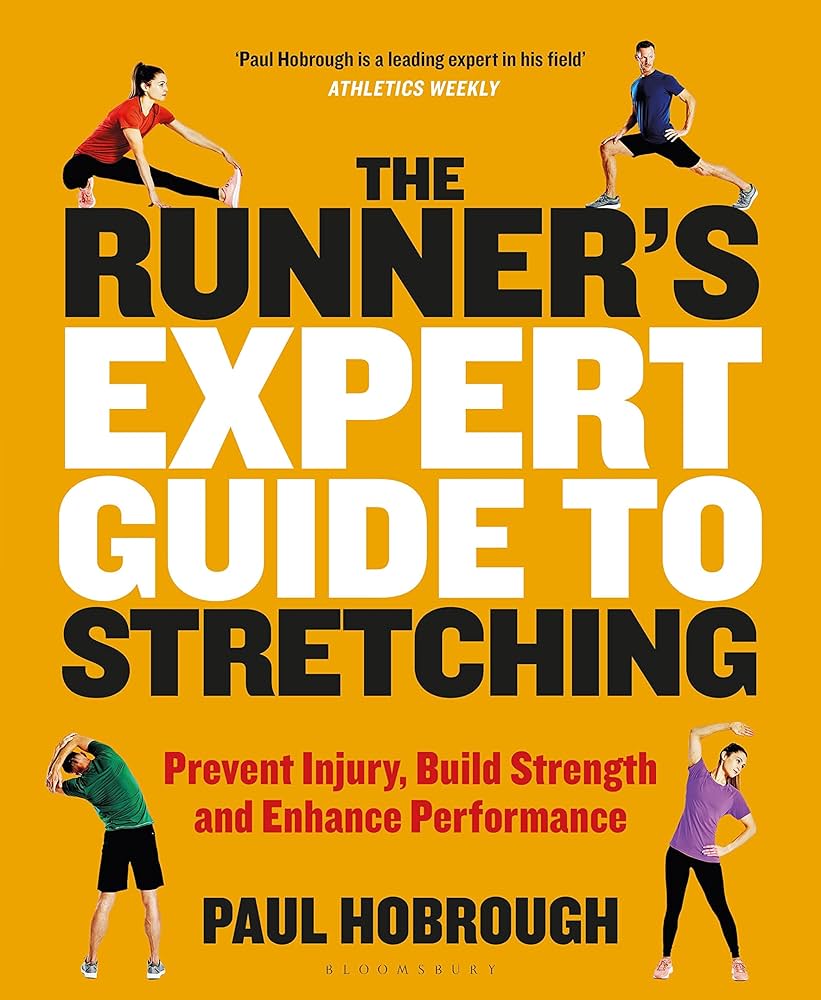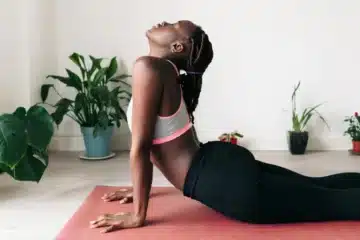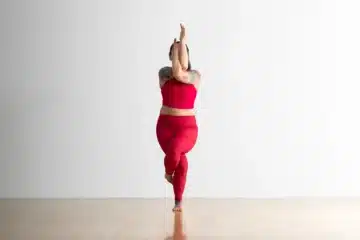Yoga for runners is essential for stretching and preventing injuries. By incorporating yoga into your running routine, you can improve flexibility, balance, and strength, reducing the risk of common running injuries.
Regular yoga practice can help runners increase their range of motion, relax tight muscles, and improve their breathing, leading to better performance and reduced discomfort. In this guide, we will explore specific yoga poses and sequences designed to target the muscles and areas of the body that are most stressed during running.
Whether you’re a beginner or an experienced runner, adding yoga to your training regimen can enhance your overall well-being and help you maintain a strong, injury-free body.
The Benefits Of Yoga For Runners
Yoga offers incredible benefits for runners, helping to improve strength, flexibility, and focus to enhance performance and prevent injuries. Let’s explore the specific advantages of integrating yoga into a runner’s training routine:
Increased Flexibility
Yoga promotes enhanced flexibility in the muscles and joints, crucial for runners to achieve a full range of motion during each stride. The various poses in yoga help to stretch and lengthen the muscles, reducing the risk of strains and promoting overall mobility.
Improved Balance And Stability
By practicing yoga, runners can develop improved balance and stability, which are essential for maintaining proper form and reducing the risk of falls or injuries. The focus on body alignment and control in yoga helps runners build a stronger foundation for their running technique.
Enhanced Focus And Mental Clarity
Yoga not only strengthens the body but also cultivates mental clarity and focus, allowing runners to stay present and attentive during their runs. The breathing techniques and mindfulness practiced in yoga can help runners manage stress, anxiety, and fatigue, leading to a more enjoyable and productive running experience.
Key Yoga Poses For Runners
Yoga is a powerful practice that can complement a runner’s training routine. Incorporating specific yoga poses can help runners with flexibility, strength, balance, and injury prevention. Here are some key yoga poses that can be highly beneficial for runners.
Downward-facing Dog
This pose is great for stretching the calves, hamstrings, and Achilles tendons. It also helps to elongate the spine and strengthen the shoulders and arms, providing a full-body stretch that can be especially beneficial for runners looking to improve their flexibility and overall posture.
Warrior Ii
Warrior II is an excellent pose for strengthening the legs and opening up the hips. It can help runners improve their endurance and stability while also providing a deep stretch for the groin and thighs. This pose can promote better alignment and balance, which are essential for preventing injuries while running.
Tree Pose
Tree Pose is a balancing posture that strengthens the ankles and calves while also improving focus and concentration. It can help runners improve their stability and proprioception, which are crucial for maintaining proper form and reducing the risk of injury. This pose also stretches the thighs, groin, torso, and shoulders, offering a well-rounded benefit for runners.
Preventing Common Running Injuries With Yoga
This comprehensive guide explores how integrating yoga into a runner’s routine can help prevent common running injuries. By focusing on stretching and injury prevention techniques, runners can enhance their flexibility, strength, and balance, ultimately improving their running performance.
Running is a popular form of exercise that provides numerous physical and mental health benefits. However, runners are prone to certain common injuries that can hinder their progress. Incorporating yoga into your routine can be a game-changer when it comes to injury prevention. Yoga not only helps in building strength and flexibility but also aids in balancing the body, improving posture, and reducing the risk of repetitive strain injuries. Let’s explore how yoga can specifically help in preventing three widespread running injuries: IT Band Syndrome, Runner’s Knee, and Plantar Fasciitis.
It Band Syndrome
IT Band Syndrome is a common injury that causes pain and discomfort on the outer side of the knee. It occurs when the iliotibial band, a thick band of tissue running from the hip to the knee, becomes tight or inflamed. Yoga can be effective in preventing IT Band Syndrome by focusing on lengthening the IT band and surrounding muscles through specific stretches. Some helpful yoga poses include:
- Warrior II (Virabhadrasana II)
- Triangle Pose (Trikonasana)
- Side Angle Pose (Parsvakonasana)
These poses help in stretching and strengthening the hip abductors, glutes, and outer thigh muscles, including the IT band. Incorporating these poses into your yoga practice can help prevent the development of IT Band Syndrome and alleviate any existing discomfort in the area.
Runner’s Knee
Runner’s Knee, also known as patellofemoral pain syndrome, is a common injury characterized by pain around or behind the kneecap. Yoga can play a crucial role in preventing Runner’s Knee by focusing on strengthening the core, hips, and glutes while simultaneously improving flexibility. Incorporating the following yoga poses into your routine can help prevent this injury:
- Bridge Pose (Setu Bandhasana)
- Chair Pose (Utkatasana)
- Warrior III (Virabhadrasana III)
These poses target the muscles that support the knee, such as the quadriceps and hamstrings. By strengthening these muscles and improving flexibility, yoga can help prevent Runner’s Knee and enhance overall knee stability during running.
Plantar Fasciitis
Plantar Fasciitis is a common running injury that causes pain in the heel or arch of the foot, often felt as a stabbing sensation. Yoga can be instrumental in preventing Plantar Fasciitis by stretching and strengthening the muscles in the feet, calves, and ankles. Incorporating the following yoga poses into your routine can help prevent this injury:
- Downward-Facing Dog (Adho Mukha Svanasana)
- Seated Forward Bend (Paschimottanasana)
- Standing Forward Bend (Uttanasana)
These poses help in stretching the plantar fascia and calf muscles, relieving tension and improving mobility in the feet. By incorporating these stretches into your yoga practice, you can significantly reduce the risk of developing Plantar Fasciitis and maintain healthy feet for optimal running performance.

Credit: us.humankinetics.com
Yoga Practices To Boost Running Performance
Incorporating yoga into your running routine can have a significant impact on your performance, helping you prevent injuries and improve overall endurance. By adding specific yoga practices to your training, you can strengthen the muscles that support running, enhance your breathing techniques for better endurance, and facilitate quicker recovery. In this article, we will explore three essential yoga practices that can boost your running performance: Breathing Techniques for Endurance, Strength-Building Sequences, and Restorative Yoga for Recovery.
Breathing Techniques For Endurance
One of the fundamental aspects of running performance is efficient breathing. Yoga offers various breathing techniques that can help you increase your lung capacity and maintain a steady flow of oxygen during your runs. Here are two valuable breathing techniques you should incorporate into your training:
- Ujjayi Breathing: This technique involves taking deep breaths in and out through your nose while slightly constricting the back of the throat. Ujjayi breathing helps regulate your breath and encourages a calm and focused state of mind.
- Kapalabhati Breathing: This breathing technique involves rapid and forceful exhales through the nose, followed by passive inhales. Kapalabhati breathing energizes the body, clears the mind, and helps improve lung capacity.
Strength-building Sequences
Incorporating strength-building yoga sequences into your training can help enhance your running performance by targeting the specific muscles needed for running. Here are three powerful yoga poses that can strengthen key muscle groups:
| Yoga Pose | Targeted Muscle Group |
|---|---|
| Warrior II | Quadriceps, glutes, hips |
| Boat Pose | Core muscles |
| Tree Pose | Ankle stability, inner thighs |
Restorative Yoga For Recovery
Running puts significant stress on your body, and proper recovery is crucial to prevent injuries. Restorative yoga can help you relax, release tension, and promote recovery after intense running sessions. Here are two restorative yoga poses to add to your post-run routine:
- Child’s Pose: This gentle pose stretches the lower back, hips, and thighs while promoting deep relaxation.
- Legs-Up-The-Wall Pose: This restorative pose allows blood to flow back to the heart and reduces inflammation in the legs, promoting faster recovery.
Integrating these yoga practices into your running routine not only enhances your physical strength but also cultivates mental focus and resilience. By breathing mindfully, strengthening key muscle groups, and prioritizing recovery, you can optimize your running performance and enjoy the sport with greater joy and ease.
Incorporating Yoga Into Your Running Routine
As a runner, you know the importance of a strong and flexible body to enhance your performance and prevent injuries. That’s where yoga comes in. By incorporating yoga into your running routine, you can improve your balance, flexibility, and core strength, ultimately helping you become a better and injury-free runner. Here’s how you can seamlessly integrate yoga into your training:
Pre-run Warm-up
Before hitting the pavement, it’s crucial to warm up your muscles to prevent injury. Incorporating yoga poses into your pre-run routine can effectively prepare your body for the run ahead. Here are some simple yoga poses to include in your warm-up:
- Downward Dog: Begin in a plank position with your hands directly under your shoulders. From there, lift your hips upward, creating an inverted V shape with your body. Hold for a few breaths, stretching your calves and hamstrings.
- Crescent Lunge: Step one foot forward into a lunge, ensuring your front knee is directly above your ankle. Raise your arms overhead, feeling the stretch in your hip flexors and quadriceps.
- Warrior I: Starting from the lunge position, rotate your back foot outwards at a 45-degree angle. Lift your arms overhead, square your hips, and feel the stretch in your hip flexors and shoulders.
Post-run Stretching
After a long and intense run, your muscles deserve some love and attention. Including yoga stretches in your post-run routine can help in reducing muscle soreness and improving recovery time. Here are a few yoga poses that are ideal for post-run stretching:
- Child’s Pose: Start on your knees, sitting back on your heels. Stretch your arms forward and lower your forehead towards the ground. This pose helps to stretch your back, hips, and thighs.
- Pigeon Pose: From a plank position, bring your right knee forward towards your right hand, placing your shin on the ground. Extend your left leg straight behind you. Sink your hips down, feeling the stretch in your hip flexors and glutes. Repeat on the opposite side.
- Thread the Needle: Start on all fours. Reach your right hand under your left arm, allowing your right shoulder and temple to rest on the ground. This pose provides a deep stretch in your upper back and shoulders. Repeat on the other side.
Weekly Yoga Sessions
While incorporating yoga into your warm-up and cool-down routines is essential, dedicating regular weekly yoga sessions can provide additional benefits to your overall running performance. These sessions can focus on building strength, flexibility, and balance, targeting the specific areas runner’s commonly need to address. Consider joining a yoga class or following an online yoga program tailored for runners to reap the maximum benefits.
Frequently Asked Questions On Yoga For Runners: Stretching And Injury Prevention Guide
Can Yoga Prevent Running Injuries?
Yes, yoga can help prevent running injuries by improving flexibility, strength, and balance. Practicing yoga regularly can also enhance body awareness and promote better alignment and posture, reducing the risk of overuse injuries. Integrating yoga into your routine can be beneficial for injury prevention during running.
How Many Times A Week Should A Runner Do Yoga?
A runner should aim for 2-3 yoga sessions per week to help with flexibility and recovery. Varying the intensity and focus of the yoga practice can complement running training. Consistency is key to reaping the benefits of both activities.
Is Yoga Good For Runners Ankle Injuries?
Yes, yoga can be beneficial for runners with ankle injuries. It helps improve flexibility, strength, and balance, which aids in injury prevention and recovery. Certain yoga poses can specifically target the ankle area, providing support and promoting healing.
What Is The Bridge Pose For Running?
The bridge pose for running is a yoga exercise that strengthens your core, glutes, and hamstrings, improves flexibility, and enhances balance and stability. It can help prevent injuries and improve your running performance.
Conclusion
To sum it up, integrating yoga into your running routine is a game-changer for injury prevention and overall performance. By incorporating specific stretches and poses, you’ll help improve flexibility, balance, and strength. This not only reduces the risk of common running injuries but also enhances your running efficiency.
So why wait? Start incorporating yoga into your training to take your running to the next level. Stay injury-free and unlock your true running potential.



